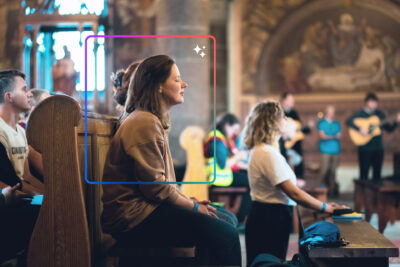
How Technology Can Help Unite Your Church
As our society fragments over social issues churches are beginning to feel the split, too. Here are three ways technology can help bring us together.
Scan the news these days, and it’s easy to think the world is coming apart at the seams. America seems to be fighting over everything these days: race, politics, gender, etc.
Close to half of Democrats and half of Republicans believe the other party’s views are a danger to the country. Racial divides have led to mass protests and even death. Rural vs. urban, rich vs. poor vs. middle-class, educated vs. uneducated…it goes on.
Social forces seem to be ripping the country apart.
The church hasn’t been immune to the divisions, either. We, too, are divided along racial, political, and socio-economic lines. Even individual churches, with members living side-by-side, saw politics divide them during last year’s contentious election.
But is there anything we can do about it?
Technology may hold an answer.
Uniting the Church through Technology
Here are three ways technology can help your church do this:
1. Technology has become a nearly universal language
Though some economic disparities still limit access to technology, those limitations are declining. A 2014 study showed that 85 percent of Americans have access to a computer in their homes (and that number nears 95 percent in large, urban areas). Three-quarters of Americans have a smartphone. More than half of Americans own a tablet. Almost 9 in 10 are on the internet. Millennials and Gen Z (our two youngest generations) have an even higher adoption rate for new technology.
Americans have few common experiences these days. But most of us use technology on a regular, if not hourly, basis. Even those who brag about not being “technologically savvy” can’t escape tech’s pull. Most of the people in your church regularly use computers, mobile phones, and/or tablets. Technology has become a common language for all of us. On average, we all spend three hours a day on our smartphones. We know how to text. We know how to use mobile apps. We understand how to pay our bills, buy movie tickets, and order groceries from afar.
Take advantage of this common experience by looking for ways to engage technologies of choice in your context. It’s important for your church to be particularly focused on using mobile. Mobile apps are quickly replacing church buildings as the hub for community engagement.
2. Social media can give us opportunities for dialogue
With nearly 70 percent of Americans on social media, we get the opportunity to discuss topics with a diverse set of people we wouldn’t have been able to a generation or two ago. Scroll through your Twitter or Facebook feed, and you’ll likely find people of various races and economic backgrounds. Those conversations, even in their minimal character counts, change us. They open our eyes up to the views of others.
That’s particularly important within the church. Increasingly, church members aren’t just interacting with each other in the halls of our buildings, but in Facebook, Twitter, Instagram, etc. Two people who attend your church and live on opposite sides of your town likely get a better look into the Monday-through-Saturday lives of one another today than they would have 30 years ago.
Your church has the opportunity to facilitate these conversations through your social media feeds. As you start conversations (rather than avoid them), you can bring people together from different backgrounds within your body.
Granted, it’s not easy. Conversations over social media have a tendency to become echo chambers where people simply get their previous prejudices reinforced. But what if your church cultivated something different? Your social media isn’t just an opportunity to promote your church’s events. It’s a unique opportunity to begin dialogue over the tough questions that divide us. Be a platform for the civility we’d all like to see cultivated on social media.
3. Technology gives us opportunities to give to united causes
Giving often brings us together. Whether we’re giving toward a community outreach project, a new roof for our church building, disaster recovery, or even our church’s general fund, we all have a stake in the endeavor.
We’re seeing this now as churches pool their resources to help people impacted by Hurricane Harvey. It’s hard to focus on minor political and social issues when you’re focused on helping others.
Now, the church has always been able to give to united causes. In fact, the Bible describes the early church’s efforts to rally generosity around the Jerusalem church.
But technology, specifically mobile technology, changes the dynamics. You no longer have to wait until everyone gathers to give. When a need arises, you can send out a notification on your mobile app and let people respond wherever they are. And every time you do so, you’re bringing people together around a common cause.
Technology can’t unite the church on its own. It’s an accelerator, not a problem solver. But it can play a part. Connect the right tech tools to a defined mission and strategy, and technology can help you build bridges.
To see how everyday technology can help unify your church and connect it with the wider community, click the button below to talk to one of our church tech experts!






